In a welcome bit of progress at the Oregon Department of Transportation, the agency is poised to update their approach to setting speed limits.
ODOT is currently seeking public feedback on a proposed rule change that would clarify how they decide to set speeds on roads throughout the state.
According to just-published proposed revisions (PDF) to two Oregon Administrative Rules (OARs), ODOT will base speed designations on land-use context and will consider a new metric of 50th percentile speeds. The new rules would give ODOT’s Speed Zone Review Panel much more leeway to designate lower speeds.
Like many state DOTs, ODOT has typically relied on the “85th percentile” rule to designate speeds. That rule defines the optimum speed as that which 85% of drivers will drive at or below in “free flow” conditions. That approach has come under fire for prioritizing drivers (who will always push the upper limits of safety) at the expense of safety of themselves and everyone else on the road.
Advertisement
The City of Portland doesn’t use the 85th percentile method and has long sought changes at ODOT to a more safety-oriented and flexible approach. Even ODOT Director Kris Strickler has hinted recently that it’s time to change. “Maybe the historic practice that we’ve been using [to set speeds] doesn’t necessarily fit the context of what our current transportation system is,” Strickler said during legislative testimony back in March.
Now it’s finally happening.
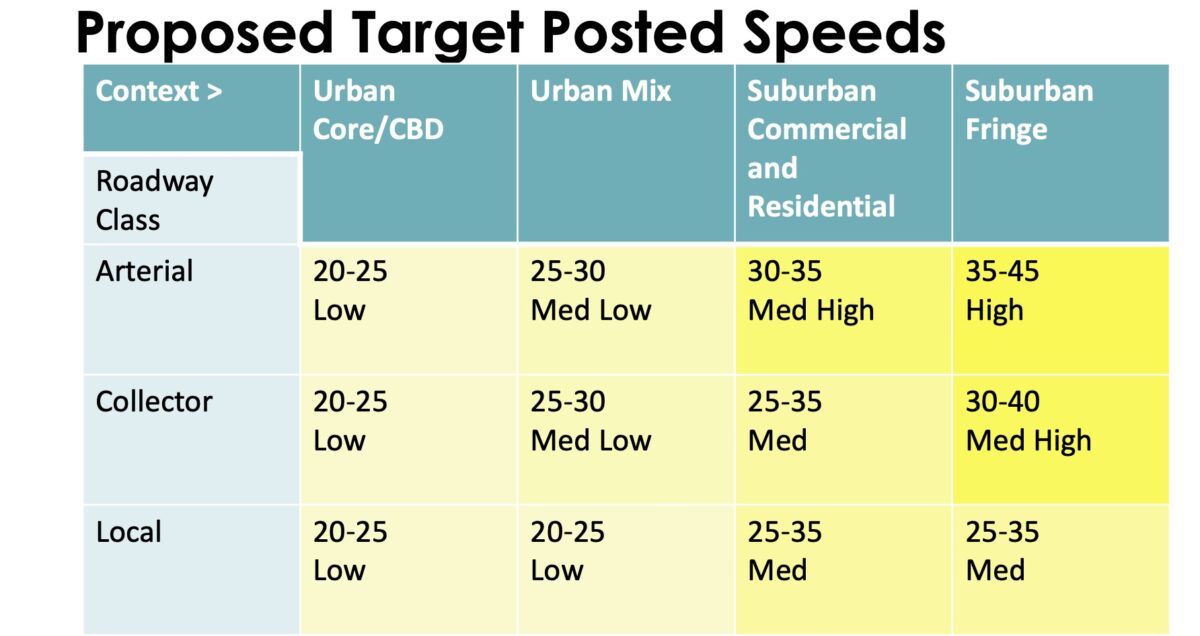
The new rules would add four new functional street classifications: “urban core”, “urban mix”, “suburban commercial or residential”, and “suburban fringe”. Each classification would come with a suggested speed for collector, local, and arterial roadways. The concept of a 50th percentile speed would also be added into the analysis mix. This is significant because engineers could take into account the average speed of all drivers — instead of just the speed 85% of them are going.
Giving ODOT engineers more flexibility to set speeds and having rules that take different land uses into account is a huge deal!
If you want to share comments of support or concern with ODOT about these proposed changes, you can email SpeedSettingComments@odot.state.or.us. There’s also a public hearing on January 17th in Salem if you’re so inclined. Learn more about the hearing and the new rules on ODOT’s website.
— Jonathan Maus: (503) 706-8804, @jonathan_maus on Twitter and jonathan@bikeportland.org
— Get our headlines delivered to your inbox.
— Support this independent community media outlet with a one-time contribution or monthly subscription.


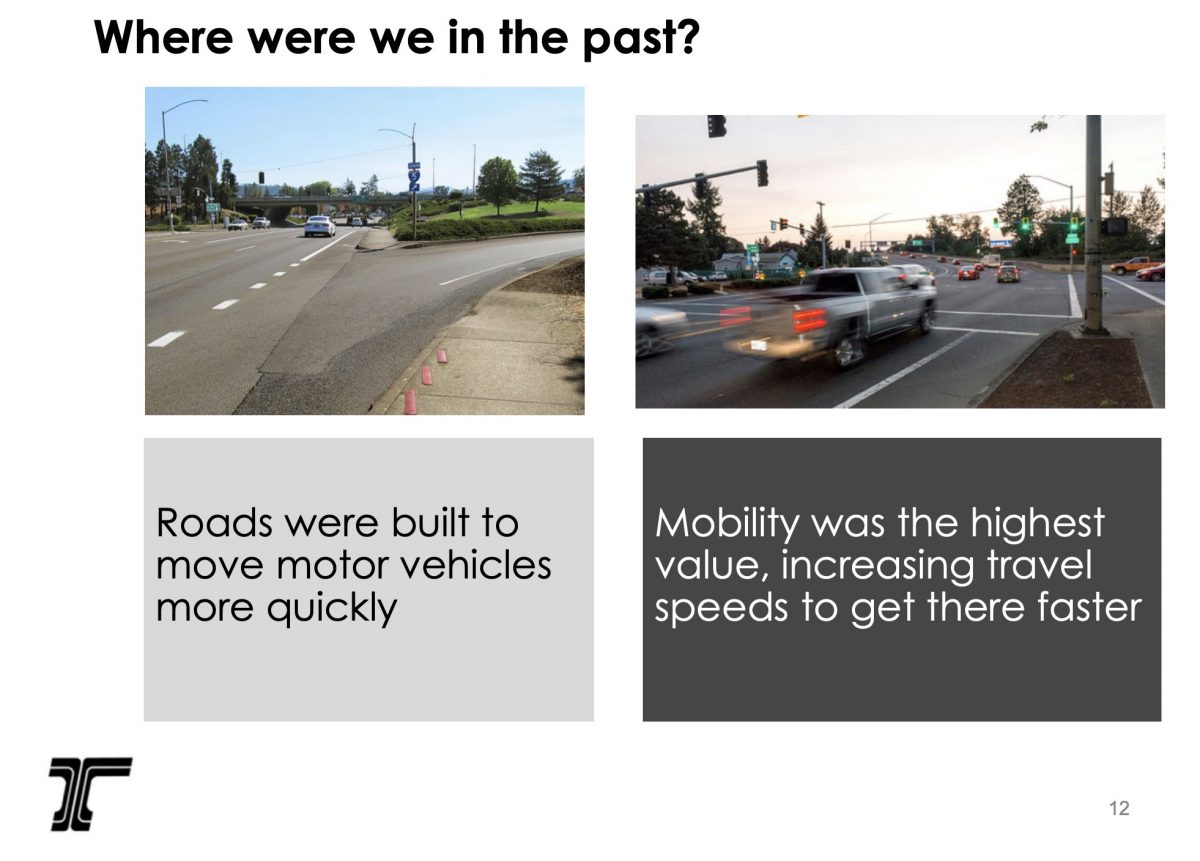
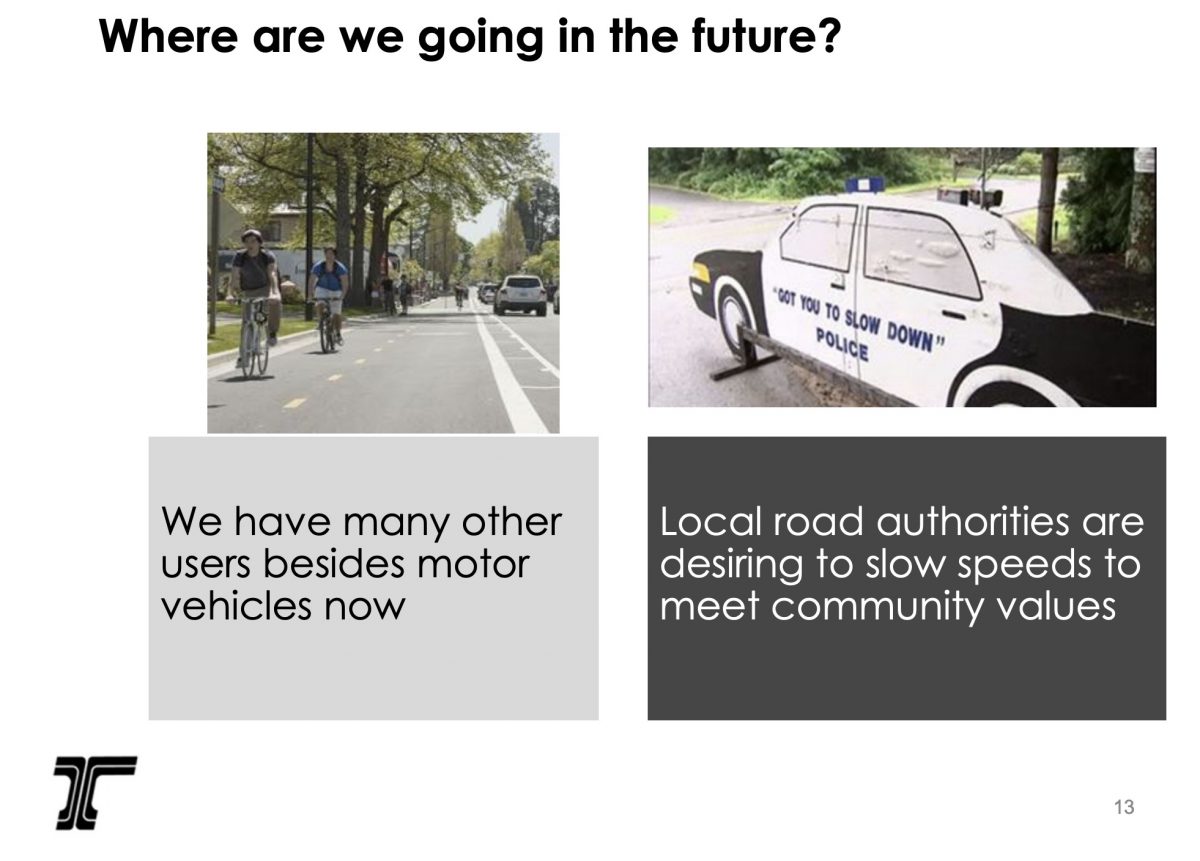
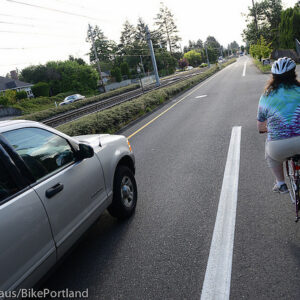
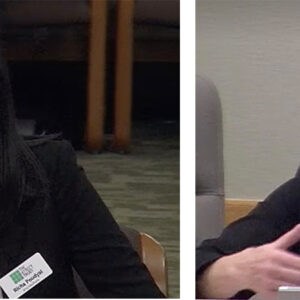
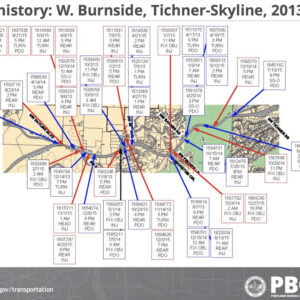
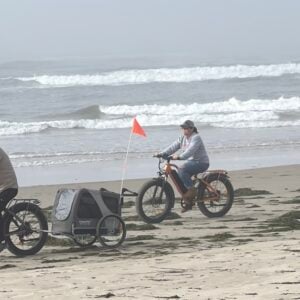
Thanks for reading.
BikePortland has served this community with independent community journalism since 2005. We rely on subscriptions from readers like you to survive. Your financial support is vital in keeping this valuable resource alive and well.
Please subscribe today to strengthen and expand our work.
According to ODOT’s slides, biking and walking were just recently invented?
My neighborhood street, built in the 1910s, was definitely built to carry people first, and then cars. I can’t say I’m surprised to see that on an ODOT slide, though. Most people in our society have been indoctrinated into the windshield perspective religion. It can be hard to break that.
In most US cities in the 1930s through 60s there was a building craze to remove wide sidewalks and trees and replace them with much wider paved city streets to accommodate automobile use and parking. It’s interesting to look at before-and-after photographs of urban streets, especially downtown streets, and see how much sidewalks shrank. Plus the 1950s cars were HUGE!
Using the 50% percentile speed, while better than the 85th percentile, still lets selfish, clueless, untrained motorists determine what the speed limit should be. The result will still be streets that are perceived as too dangerous to walk or cycle on and thus falling mode shares for non-SOV’s. We’d do better to set statutory limits for road types and measure success by mode share on said road.
Hmm, maybe we should push to set ODOT’s budget based on mode share. If we get more people out of cars, they get more funds. If not, starve the beast. (Suddenly the rain-makers are the bike/ped/transit/rail folks with the basement offices.)
Enforcement, enforcement, enforcement, regardless of what baggage it carries. Drivers need to fear police or nothing will change.
I share your concern that the 50th percentile is still problematic. However, I’ll note that the way in which it’s used appears substantially different, as well. On quick review, it’s one of many factors (which also would still include the 85%) that would be included in an “analysis of speed characteristics,” which then in turn is one of several things used to generate the speed limit. This looks quite a bit different than the current approach, which has a more direct, prescriptive relationship between the 85% speed and the final speed limit.
I intend to dig more carefully into the proposal and submit some comments, but it definitely looks like a meaninglful improvement over status quo.
Jonathan: not to be pedantic, but the 50th percentile is not the “average” speed, as that term is normally understood (the mean). It’s looking at the median. That’s important because I suspect the spectrum of speeds driven include far more outliers on the high end. I.e., you probably get very few people driving much below the speed limit, but a substantial number far in excess (a chi-squared distribution). If you used the mean of speeds (and similarly if using the 85th percentil), those speeders would push the speed limit up. But using the median, the absolute speeds at the tail of the distribution probably won’t make much difference.
Sorry, this second comment was not meant as a reply.
Is there anything in this rule that directs ODOT freightgineers to look at the lower 50% and not the upper 50%? Why do I get this feeling that ODOT will use this to justify raising some speed limits?
Of course they will. You know it instinctively, but even if you didn’t, their very vague definitions should give them away:
(a) “Urban Core,” which generally includes downtown areas with the highest development densities and building heights in the urban area, minimal setbacks (building in back of sidewalk), parking on the street within a well-connected roadway system and typically smaller consistent block sizes.¶
(b) “Urban Mix,” which generally includes mixed -use (commercial, retail, restaurant, office and residential) high density areas on small lots with buildings typically adjacent to the sidewalk and parking on the streets, where buildings are typically not as tall as urban core and may have parking in front or behind the buildings within a well connected roadway system and typically small to medium block sizes.¶
(c) “Suburban Commercial or Residential,” which generally includes areas of land uses that have residential, offices, restaurants or retail spaces with setbacks from the roadway usually meant to be more accessible by car and may include large parking lots, or which may be characterized by big box stores, commercial strip centers, auto dealers, office parks or gas stations, or which may be large residential neighborhoods that have their access from widely spaced roadway connections with few driveways to the roadway, and are have disconnected or
sparse roadway connections and typically large blocks.¶
(d) “Suburban Fringe, ” which generally includes transition areas between urban and rural areas where there may be few homes and structures, sparsely developed land, lower density of businesses and fewer driveways, intermittent commercial or industrial uses and typically have fewer street connections and larger lot sizes.¶
Most cities have far more precise definitions of urban and suburban based on population and/or housing densities and not based on a car orientation, why can’t ODOT do the same?
As a cyclist one of my concerns is the speed of traffic in the lane next to me. I ride Hall in Beaverton past the Washington Square mall every day, a road with a 40mph speed limit and a bike lane on both sides. Hall is controlled by ODOT.
The road is probably a “Suburban Commercial” arterial, but I think having a bike lane on the road should be an additional factor in terming the speed limit. There are lots of cars turning in and out of parking lots along the road, and when Hall crosses 217, the bike lane disappears, forcing bikers to merge with traffic. Dangerous at best, this kind of infrastructure problem is exacerbated by a large difference in speed between cyclists and car and truck traffic.
In a sane world, no street with bike lanes and/or sidewalks would ever be signed above 35mph. 40+ MPH should be for country roads, and divided highways in urban areas with no non-motor vehicle users.
For the Copenhagen model, streets 30-50 kph (20-30 mph) should be a painted bike lane, with a buffer at higher speeds; 50-70 kph (30-45 mph) should be curb-separated bike lanes; above that, the bike lane needs to be fully separated by a median, preferably 2-way on the right side of traffic, on both sides of the roadway.
I don’t think I’ve ever ridden east to west on Hall over 217. But I’ve ridden many times west to east in that location, where there’s a sudden ramp to the sidewalk and directions telling cyclists to get on the sidewalk but yield to pedestrians! Once you’ve crossed 217, there’s another ramp that dumps you into the mixing zone for the right turn onto Scholls Ferry. The whole thing is a terrible mess for cyclists, but great for MV drivers since it keeps the cycles out of their way.
Agreed Fred, that 217 crossing is a terrible mess. I used to ride it west to east several times a week (though I’ve only ridden it the other way once – which is good because cyclists are forced to take the lane going that direction). I never minded sharing the crossing with pedestrians there because there usually aren’t many and I use my bell courteously, but that right-turn mixing zone is nasty, and the downramp into that lane is poorly placed. Plus our speeds are low because it’s uphill, which increases the risk exposure.
Setting speed limits is one thing, getting drivers to obey speed limits is quite another. If most drivers obeyed speed limits we wouldn’t need speed bumps or traffic calming features. Just curious, is that 85th percentile rule used on freeways? Seems like speed limit would be 10 mph higher if it was.
You mean the speed limits that no drivers observe and police almost never enforce? We obviously have different definitions of “progress.”
And here’s one for you, Jonathan, as someone who (like me) believes that the language we use to describe things (like transportation) matters:
Would the proposed change really allow ODOT to “set safer speeds”? No, it literally would not.
Not sure I see the smarts in this. Left entirely out of the discussion is crash causes and any attempt at all to determine not only just how and why car speed causes crashes, and at what point such crashes start to get frequent with speed as a primary factor. The 85th percentile speed was determined via objective measurement relating crashes and driver behavior. It discovered that most drivers develop good instincts as far as speed goes, though not all. If this (lowering speed limits) works to reduce crashes, the most likely reason is that what the lower limit (possibly with enforcement) has done is to eliminate or nearly eliminate those who were traveling significantly faster than the 85th percentile speed. Also, I want to ask–does it make any sense to mix modes as different as bikes and cars on the same busy road? It sure seems to me that building better infrastructure–bike lanes that are somehow protected and/or separated–would be a far better solution. We are not Europe, and there is no reason we have to be by mixing modes that are so different. Find ways to make biking safer where it’s truly popular, by all means yes. But, find ways to do that and keep auto traffic flowing at a sensible and productive speed at the same time by safely separating the modes.